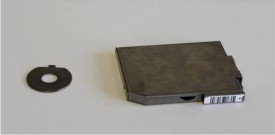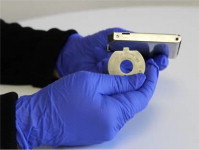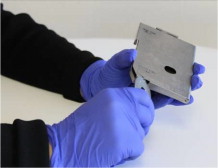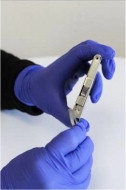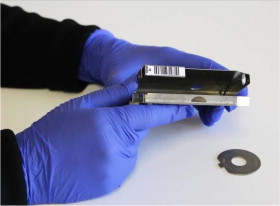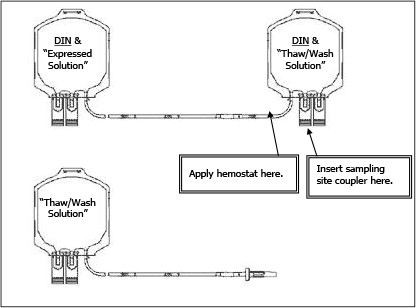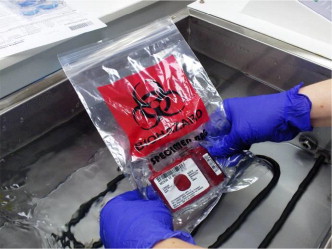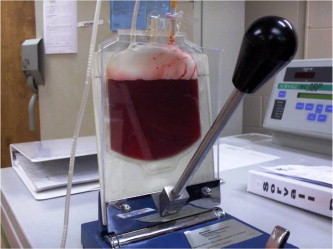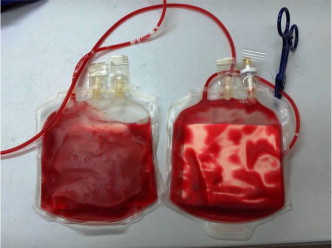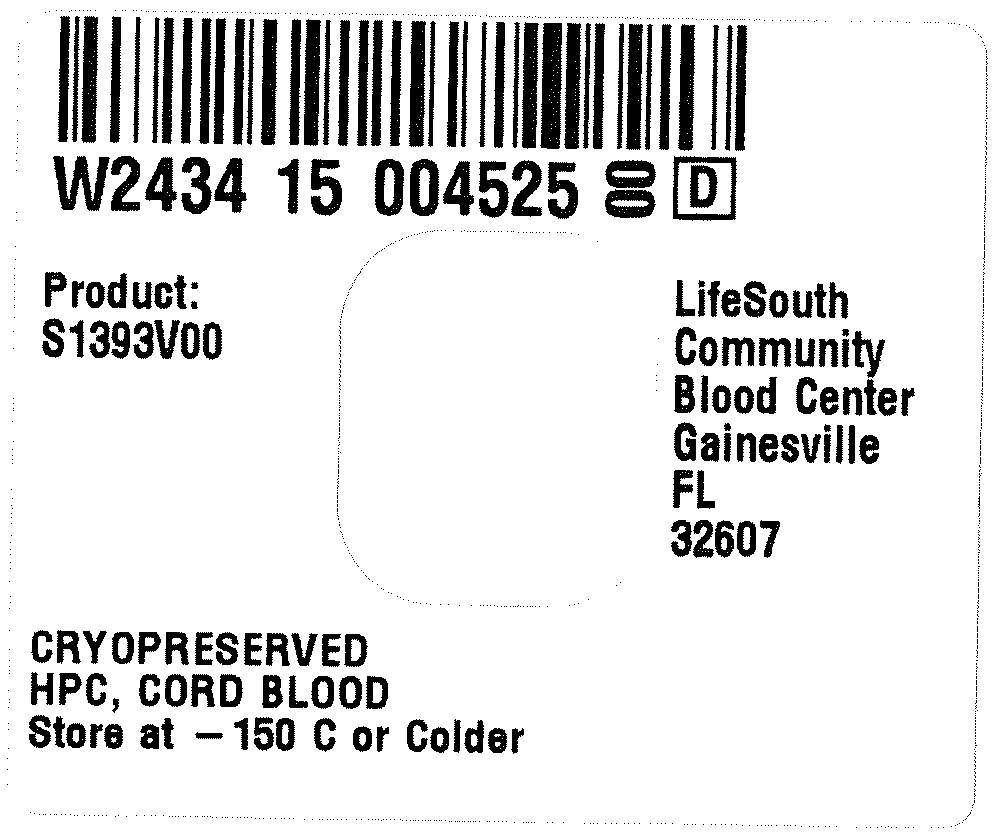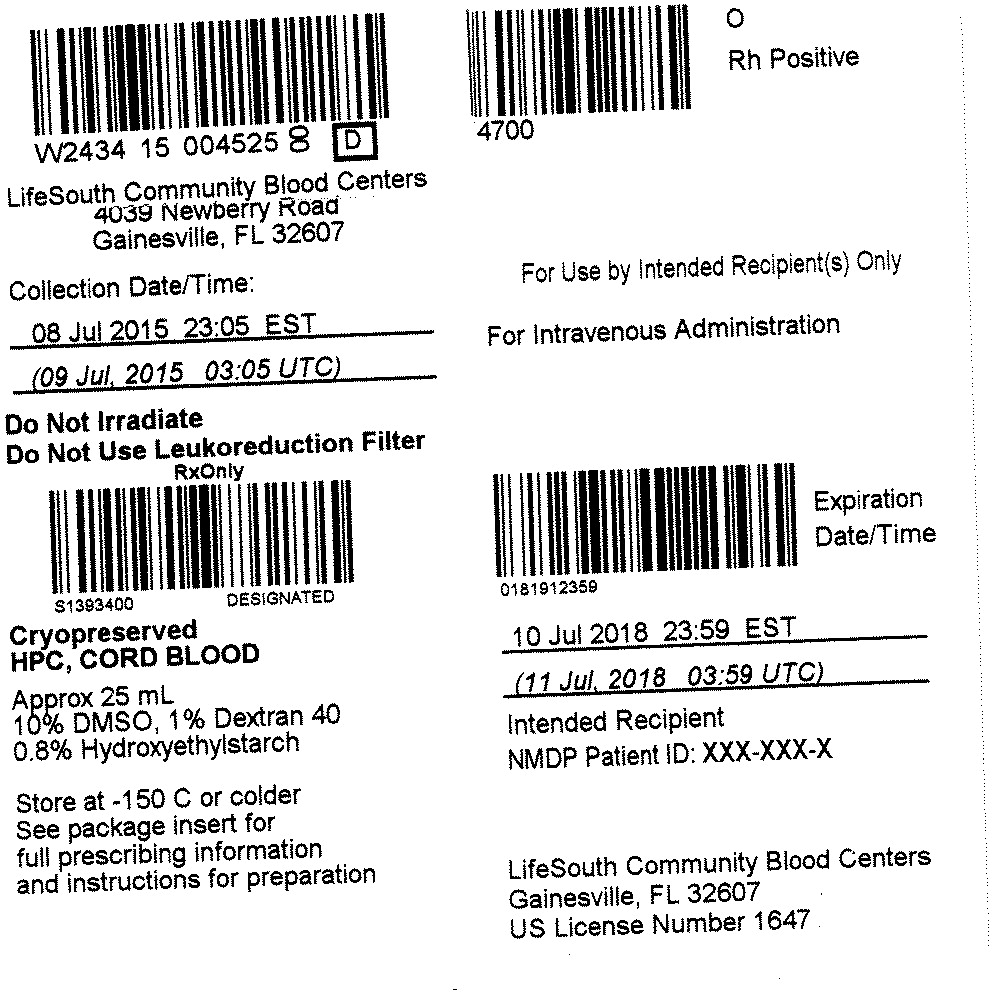CORDCYTE- human cord blood hematopoietic progenitor cell injection, suspension
CORDCYTE by
Drug Labeling and Warnings
CORDCYTE by is a Other medication manufactured, distributed, or labeled by LifeSouth Community Blood Centers, Inc.. Drug facts, warnings, and ingredients follow.
Drug Details [pdf]
-
HIGHLIGHTS OF PRESCRIBING INFORMATION
These highlights do not include all the information needed to use CORDCYTE safely and effectively. See full prescribing information for CORDCYTE.
CORDCYTE (HPC, Cord Blood)
Injectable Suspension for Intravenous Use
Initial U.S. Approval: 2013WARNING: FATAL INFUSION REACTIONS, GRAFT VERSUS HOST DISEASE, ENGRAFTMENT SYNDROME, AND GRAFT FAILURE
See full prescribing information for complete boxed warning.
- Fatal infusion reactions: Monitor patients during infusion and discontinue for severe reactions. ( 5.1, 5.2).
- Graft-vs.-host disease (GVHD): GVHD may be fatal. Administration of immunosuppressive therapy may decrease the risk of GVHD (5.3).
- Engraftment syndrome: Engraftment syndrome may be fatal. Treat engraftment syndrome promptly with corticosteroids (5.4).
- Graft failure: Graft failure may be fatal. Monitor patients for laboratory evidence of hematopoietic recovery (5.5).
RECENT MAJOR CHANGES
Boxed Warning 5/2015 Contraindications (4) 5/2015 INDICATIONS AND USAGE
CORDCYTE, HPC, Cord Blood, is an allogeneic cord blood hematopoietic progenitor cell therapy indicated for use in unrelated donor hematopoietic progenitor cell transplantation procedures in conjunction with an appropriate preparative regimen for hematopoietic and immunologic reconstitution in patients with disorders affecting the hematopoietic system that are inherited, acquired, or result from myeloablative treatment (1).
The risk benefit assessment for an individual patient depends on the patient characteristics, including disease, stage, risk factors, and specific manifestations of the disease, on characteristics of the graft, and on other available treatments or types of hematopoietic progenitor cells (1).
DOSAGE AND ADMINISTRATION
- For intravenous use only
- Do not irradiate
- Unit selection and administration of CORDCYTE should be done under the direction of a physician experienced in hematopoietic progenitor cell transplantation (2).
- The recommended minimum dose is 2.5 x 107 nucleated cells/kg at cryopreservation (2.1).
- Do not administer CORDCYTE through the same tubing with other products except for normal saline (2.3).
DOSAGE FORMS AND STRENGTHS
Each unit contains a minimum of 5 x 108 total nucleated cells with at least 1.25 x 106 viable CD34+ cells at the time of cryopreservation. The exact pre-cryopreservation nucleated cell content of each unit is provided on the accompanying records (3).
CONTRAINDICATIONS
None. (4)
WARNINGS AND PRECAUTIONS
ADVERSE REACTIONS
Mortality, from all causes, at 100 days post-transplant was 25% (5, 6.1).
The most common infusion-related adverse reactions (≥ 5%) are hypertension, vomiting, nausea, bradycardia, and fever (6.1).
To report SUSPECTED ADVERSE REACTIONS, contact the quality department for LifeSouth Community Blood Centers at 1-888-795-2707 and FDA at 1-800-FDA-1088 or www.fda.gov/medwatch.
USE IN SPECIFIC POPULATIONS
Pregnancy: No animal or human data. Use only if clearly needed (8.1).
See 17 for PATIENT COUNSELING INFORMATION.
Revised: 5/2015
-
Table of Contents
FULL PRESCRIBING INFORMATION: CONTENTS*
WARNING: FATAL INFUSION REACTIONS, GRAFT VERSUS HOST DISEASE, ENGRAFTMENT SYNDROME AND GRAFT FAILURE
1 INDICATIONS AND USAGE
2 DOSAGE AND ADMINISTRATION
2.1 Dosing
2.2 Preparation for Infusion
2.3 Administration
3 DOSAGE FORMS AND STRENGTHS
4 CONTRAINDICATIONS
5 WARNINGS AND PRECAUTIONS
5.1 Hypersensitivity Reactions
5.2 Infusion Reactions
5.3 Graft-versus-Host Disease
5.4 Engraftment Syndrome
5.5 Graft Failure
5.6 Malignancies of Donor Origin
5.7 Transmission of Serious Infections
5.8 Transmission of Rare Genetic Diseases
6 ADVERSE REACTIONS
6.1 Clinical Trials Experience
8 USE IN SPECIFIC POPULATIONS
8.1 Pregnancy
8.4 Pediatric Use
8.5 Geriatric Use
8.6 Renal Disease
10 OVERDOSAGE
10.1 Human Overdosage Experience
10.2 Management of Overdose
11 DESCRIPTION
12 CLINICAL PHARMACOLOGY
12.1 Mechanism of Action
14 CLINICAL STUDIES
16 HOW SUPPLIED/STORAGE AND HANDLING
17 PATIENT COUNSELING INFORMATION
- * Sections or subsections omitted from the full prescribing information are not listed.
-
BOXED WARNING
(What is this?)
WARNING: FATAL INFUSION REACTIONS, GRAFT VERSUS HOST DISEASE, ENGRAFTMENT SYNDROME AND GRAFT FAILURE
Fatal infusion reactions: CORDCYTE administration can result in serious, including fatal, infusion reactions. Monitor patients and discontinue CORDCYTE infusion for severe reactions. [See Warnings and Precautions (5.1, 5.2)].
Graft-vs.-host disease (GVHD): GVHD is expected after administration of CORDCYTE, and may be fatal. Administration of immunosuppressive therapy may decrease the risk of GVHD. [See Warnings and Precautions (5.3)].
Engraftment syndrome: Engraftment syndrome may progress to multiorgan failure and death. Treat engraftment syndrome promptly with corticosteroids. [See Warnings and Precautions (5.4)].
Graft failure: Graft failure may be fatal. Monitor patients for laboratory evidence of hematopoietic recovery. Prior to choosing a specific unit of CORDCYTE, consider testing for HLA antibodies to identify patients who are alloimmunized. [See Warnings and Precautions (5.5)].
-
1 INDICATIONS AND USAGE
CORDCYTE, HPC (Hematopoietic Progenitor Cell), Cord Blood is an allogeneic cord blood hematopoietic progenitor cell therapy indicated for use in unrelated donor hematopoietic progenitor stem cell transplantation procedures in conjunction with an appropriate preparative regimen for hematopoietic and immunologic reconstitution in patients with disorders affecting the hematopoietic system that are inherited, acquired, or result from myeloablative treatment.
The risk benefit assessment for an individual patient depends on the patient characteristics, including disease, stage, risk factors, and specific manifestations of the disease, on characteristics of the graft, and on other available treatments or types of hematopoietic progenitor cells.
-
2 DOSAGE AND ADMINISTRATION
- For intravenous use only.
- Do not irradiate.
Unit selection and administration of CORDCYTE should be done under the direction of a physician experienced in hematopoietic progenitor cell transplantation.
2.1 Dosing
The recommended minimum dose is 2.5 x 107 nucleated cells/kg at cryopreservation. Multiple units may be required in order to achieve the appropriate dose.
Matching for at least 4 of 6 HLA-A antigens, HLA-B antigens, and HLA-DRB1 alleles is recommended. The HLA typing and nucleated cell content for each individual unit of CORDCYTE are documented in the accompanying records.
2.2 Preparation for Infusion
CORDCYTE should be prepared by a trained healthcare professional.
- Do not irradiate CORDCYTE.
- See the appended detailed instructions for preparation of CORDCYTE for infusion.
- Once prepared for infusion, CORDCYTE may be stored at room temperature (19-25ºC) or 4oC for up to 2 hours when DMSO is removed in a washing procedure [see Instructions for Preparation for Infusion]. No data are available for the stability of CORDCYTE if DMSO is not removed.
- The recommended limit on DMSO administration is 1 gram per kg body weight per day [see Warnings and Precautions (5.2) and Overdosage (10)].
2.3 Administration
CORDCYTE should be administered under the supervision of a qualified healthcare professional experienced in hematopoietic progenitor cell transplantation.
- Confirm the identity of the patient for the specified unit of CORDCYTE prior to administration.
- Confirm that emergency medications are available for use in the immediate area.
- Ensure the patient is hydrated adequately.
- Premedicate the patient 30 to 60 minutes before the administration of CORDCYTE. Premedication can include any or all of the following: antipyretics, histamine antagonists, and corticosteroids.
- Inspect the product for any abnormalities such as unusual particulates and for breaches of container integrity prior to administration. Prior to infusion, discuss all such product irregularities with the laboratory issuing the product for infusion.
- Administer CORDCYTE by intravenous infusion. Do not administer in the same tubing concurrently with products other than 0.9% Sodium Chloride, Injection (USP). CORDCYTE may be filtered through a 170 to 260 micron filter designed to remove clots. Do NOT use a filter designed to remove leukocytes.
- For adults, begin infusion of CORDCYTE at 100 milliliters per hour and increase the rate as tolerated. For children, begin infusion of CORDCYTE at 1 milliliter per kg per hour and increase as tolerated. Reduce the infusion rate if the fluid load is not tolerated. Discontinue the infusion in the event of an allergic reaction or if the patient develops a moderate to severe infusion reaction [see Warnings and Precautions (5.2) and Adverse Reactions (6)].
- Monitor the patient for adverse reactions during, and for at least six hours after, administration. Because CORDCYTE contains lysed red cells that may cause renal failure, careful monitoring of urine output is also recommended.
NOTE: If product is being prepared for a multi-unit infusion, infuse units independently. Should a reaction occur, appropriately manage the reaction before the second unit is thawed for infusion.
-
3 DOSAGE FORMS AND STRENGTHS
Each unit of CORDCYTE contains a minimum of 5 x 108 total nucleated cells with a minimum of 1.25 x 106 viable CD34+ cells, suspended in 10% dimethyl sulfoxide (DMSO) and 1% Dextran 40, at the time of cryopreservation.
The exact pre-cryopreservation nucleated cell content is provided in the accompanying records.
- 4 CONTRAINDICATIONS
-
5 WARNINGS AND PRECAUTIONS
5.1 Hypersensitivity Reactions
Allergic reactions may occur with infusion of HPC, Cord Blood, including CORDCYTE. Reactions include bronchospasm, wheezing, angioedema, pruritus and hives [see Adverse Reactions (6)]. Serious hypersensitivity reactions, including anaphylaxis, also have been reported. These reactions may be due to dimethyl sulfoxide (DMSO), Dextran 40, hydroxyethylstarch, or a plasma component of CORDCYTE.
CORDCYTE may contain residual antibiotics if the cord blood donor was exposed to antibiotics in utero. Patients with a history of allergic reactions to antibiotics should be monitored for allergic reactions following CORDCYTE administration.
5.2 Infusion Reactions
Infusion reactions are expected to occur and include nausea, vomiting, fever, rigors or chills, flushing, dyspnea, hypoxemia, chest tightness, hypertension, tachycardia, bradycardia, dysgeusia, hematuria, and mild headache. Premedication with antipyretics, histamine antagonists, and corticosteroids may reduce the incidence and intensity of infusion reactions.
Severe reactions, including respiratory distress, severe bronchospasm, severe bradycardia with heart block or other arrhythmias, cardiac arrest, hypotension, hemolysis, elevated liver enzymes, renal compromise, encephalopathy, loss of consciousness, and seizure also may occur. Many of these reactions are related to the amount of DMSO administered. Minimizing the amount of DMSO administered may reduce the risk of such reactions, although idiosyncratic responses may occur even at DMSO doses thought to be tolerated. The actual amount of DMSO depends on the method of preparation of the product for infusion. Limiting the amount of DMSO infused to no more than 1 gram per kilogram per day is recommended [see Overdosage (10)].
Infusion reactions may begin within minutes of the start of infusion of CORDCYTE, although symptoms may continue to intensify and not peak for several hours after completion of the infusion. Monitor the patient closely during this period. When a reaction occurs, discontinue the infusion and institute supportive care as needed.
If infusing more than one unit of HPC, Cord Blood, on the same day, do not administer subsequent units until all signs and symptoms of infusion reactions from the prior unit have resolved.
5.3 Graft-versus-Host Disease
Acute and chronic graft-versus-host disease (GVHD) may occur in patients who have received CORDCYTE. Classic acute GVHD is manifested as fever, rash, elevated bilirubin and liver enzymes, and diarrhea. Patients transplanted with CORDCYTE also should receive immunosuppressive drugs to decrease the risk of GVHD. [See Adverse Reactions (6.1).]
5.4 Engraftment Syndrome
Engraftment syndrome is manifested as unexplained fever and rash in the peri-engraftment period. Patients with engraftment syndrome also may have unexplained weight gain, hypoxemia, and pulmonary infiltrates in the absence of fluid overload or cardiac disease. If untreated, engraftment syndrome may progress to multiorgan failure and death. Once engraftment syndrome is recognized, begin treatment with corticosteroids to ameliorate the symptoms. [See Adverse Reactions (6.1).]
5.5 Graft Failure
Primary graft failure, which may be fatal, is defined as failure to achieve an absolute neutrophil count greater than 500 per microliter blood by Day 42 after transplantation. Immunologic rejection is the primary cause of graft failure. Patients should be monitored for laboratory evidence of hematopoietic recovery. Consider testing for HLA antibodies in order to identify patients who are alloimmunized prior to transplantation and to assist with choosing a unit with a suitable HLA type for the individual patient. [See Adverse Reactions (6.1).]
5.6 Malignancies of Donor Origin
Patients who have undergone HPC, Cord Blood transplantation may develop post-transplant lymphoproliferative disorder (PTLD), manifested as a lymphoma-like disease favoring non-nodal sites. PTLD is usually fatal if not treated.
The incidence of PTLD appears to be higher in patients who have received antithymocyte globulin. The etiology is thought to be donor lymphoid cells transformed by Epstein-Barr virus (EBV). Serial monitoring of blood for EBV DNA may be warranted in high-risk groups.
Leukemia of donor origin also has been reported in HPC, Cord Blood recipients. The natural history is presumed to be the same as that for de novo leukemia.
5.7 Transmission of Serious Infections
Transmission of infectious disease may occur because CORDCYTE is derived from human blood. Disease may be caused by known or unknown infectious agents. Donors are screened for increased risk of infection with human immunodeficiency virus (HIV), human T-cell lymphotropic virus (HTLV), hepatitis B virus (HBV), hepatitis C virus (HCV), T. pallidum, T. cruzi, West Nile Virus (WNV), transmissible spongiform encephalopathy (TSE) agents, and vaccinia. Donors are also screened for clinical evidence of sepsis, and communicable disease risks associated with xenotransplantation. Maternal blood samples are tested for HIV types 1 and 2, HTLV types I and II, HBV, HCV, T. pallidum, WNV, and T. cruzi. CORDCYTE is tested for sterility. There may be an effect on the reliability of the sterility test results if the cord blood donor was exposed to antibiotics in utero. These measures do not totally eliminate the risk of transmitting these or other transmissible infectious diseases and disease agents. Report the occurrence of a suspected transmitted infection to the quality department of LifeSouth Community Blood Centers at 1-888-795-2707.
Testing is also performed for evidence of donor infection due to cytomegalovirus (CMV). Test results may be found in the accompanying records.
5.8 Transmission of Rare Genetic Diseases
CORDCYTE may transmit rare genetic diseases involving the hematopoietic system for which donor screening and/or testing has not been performed [see Adverse Reactions (6.1)]. Cord blood donors have been screened by family history to exclude inherited disorders of the blood and marrow. CORDCYTE has been tested to exclude donors with sickle cell anemia, and anemias due to abnormalities in hemoglobins C, D, and E. Because of the age of the donor at the time CORDCYTE collection takes place, the ability to exclude rare genetic diseases is severely limited.
-
6 ADVERSE REACTIONS
Day-100 mortality from all causes was 25%.
The most common infusion-related adverse reactions (≥ 5%) are hypertension, vomiting, nausea, bradycardia, and fever.
6.1 Clinical Trials Experience
Because clinical trials are conducted under widely varying conditions, adverse reaction rates observed in the clinical trials of a drug cannot be directly compared to rates in the clinical trials of another drug and may not reflect the rates observed in practice.
The safety assessment of CORDCYTE is based primarily on review of the data submitted to the FDA dockets from various sources, the dataset for the COBLT Study, and published literature.
Infusion Reactions
The data described in Table 1 reflect exposure to 442 infusions of HPC, Cord Blood (from multiple cord blood banks) in patients treated using a total nucleated cell dose ≥ 2.5 x 107/kg on a single-arm prospective trial or expanded access use (COBLT Study). The population was 60% male and the median age was 5 years (range 0.05-68 years), and included patients treated for hematologic malignancies, inherited metabolic disorders, primary immunodeficiencies, and bone marrow failure. Preparative regimens and graft-vs.-host disease prophylaxis were not standardized. The most common infusion reactions were hypertension, vomiting, nausea, and sinus bradycardia. Hypertension and any grades 3-4 infusion-related reactions occurred more frequently in patients receiving HPC, Cord Blood in volumes > 150 milliliters and in pediatric patients. The rate of serious adverse cardiopulmonary reactions was 0.8%.
Table 1: Incidence of Infusion-Related Adverse Reactions Occurring in ≥ 1% of Infusions (COBLT Study) Any grade Grade 3-4 Any reaction 65.4% 27.6% Hypertension 48.0% 21.3% Vomiting 14.5% 0.2% Nausea 12.7% 5.7% Sinus bradycardia 10.4% 0 Fever 5.2% 0.2% Sinus tachycardia 4.5% 0.2% Allergy 3.4% 0.2% Hypotension 2.5% 0 Hemoglobinuria 2.1% 0 Hypoxia 2.0% 2.0% No information on the types and rates of infusion reactions were reported with CORDCYTE.
Other Adverse Reactions
For other adverse reactions, the raw clinical data from the dockets were pooled for 1299 (120 adult and 1179 pediatric) patients transplanted with HPC, Cord Blood (from multiple cord blood banks) with total nucleated cell dose ≥ 2.5 x 107/kg. Of these, 66% (n=862) underwent transplantation as treatment for hematologic malignancy. The preparative regimens and graft-vs.-host disease prophylaxis varied. The median total nucleated cell dose was 6.4 x 107/kg (range, 2.5-73.8 x 107/kg). For these patients, Day-100 mortality from all causes was 25%. Primary graft failure occurred in 16%; 42% developed grades 2-4 acute graft-vs.-host disease; and 19% developed grades 3-4 acute graft-vs.-host disease.
Data from published literature and from observational registries, institutional databases, and cord blood bank reviews reported to the dockets for HPC, Cord Blood (from multiple cord blood banks) revealed nine cases of donor cell leukemia, one case of transmission of infection, and one report of transplantation from a donor with an inheritable genetic disorder. The data are not sufficient to support reliable estimates of the incidences of these events.
In the COBLT Study, 15% of the patients developed engraftment syndrome.
-
8 USE IN SPECIFIC POPULATIONS
8.1 Pregnancy
Pregnancy Category C. Animal reproduction studies have not been conducted with CORDCYTE. It is also not known whether CORDCYTE can cause fetal harm when administered to a pregnant woman or can affect reproduction capacity. There are no adequate and well-controlled studies in pregnant women. CORDCYTE should be used during pregnancy only if the potential benefit justifies the potential risk to the fetus.
8.4 Pediatric Use
HPC, Cord Blood has been used in pediatric patients with disorders affecting the hematopoietic system that are inherited, acquired, or resulted from myeloablative treatment [see Dosage and Administration (2), Adverse Reactions (6), and Clinical Studies (14)].
8.5 Geriatric Use
Clinical studies of HPC, Cord Blood (from multiple cord blood banks) did not include sufficient numbers of subjects aged 65 years and over to determine whether they respond differently than younger subjects. In general, administration of CORDCYTE to patients over age 65 years should be cautious, reflecting their greater frequency of decreased hepatic, renal, or cardiac function, and of concomitant disease or other drug therapy.
-
10 OVERDOSAGE
10.1 Human Overdosage Experience
There has been no experience with overdosage of HPC, Cord Blood in human clinical trials. Single doses of LifeSouth CORDCYTE up to 71 x 107 TNC/kg have been administered. HPC, Cord Blood prepared for infusion may contain dimethyl sulfoxide (DMSO). The maximum tolerated dose of DMSO has not been established, but it is customary not to exceed a DMSO dose of 1 gm/kg/day when given intravenously. Several cases of altered mental status and coma have been reported with higher doses of DMSO.
-
11 DESCRIPTION
CORDCYTE consists of hematopoietic progenitor cells, monocytes, lymphocytes, and granulocytes from human cord blood for intravenous infusion. Blood recovered from umbilical cord and placenta is volume reduced and partially depleted of red blood cells and plasma.
The active ingredient is hematopoietic progenitor cells which express the cell surface marker CD34. The potency of cord blood is determined by measuring the numbers of total nucleated cells (TNC) and CD34+ cells, and cell viability. Each unit of CORDCYTE contains a minimum of 5 x 108 total nucleated cells with at least 1.25 x 106 viable CD34+ cells at the time of cryopreservation. The cellular composition of CORDCYTE depends on the composition of cells in the blood recovered from the umbilical cord and placenta of the donor. The actual nucleated cell count, the CD34+ cell count, the ABO group, and the HLA typing are listed in the accompanying records sent with each individual unit.
CORDCYTE has the following inactive ingredients: dimethyl sulfoxide (DMSO), Dextran 40, and hydroxyethylstarch. When prepared for infusion according to instructions, the infusate contains the following inactive ingredients: Dextran 40, human serum albumin, residual DMSO, and residual hydroxyethylstarch.
-
12 CLINICAL PHARMACOLOGY
12.1 Mechanism of Action
Hematopoietic stem/progenitor cells from HPC, Cord Blood migrate to the bone marrow where they divide and mature. The mature cells are released into the bloodstream, where some circulate and others migrate to tissue sites, partially or fully restoring blood counts and function, including immune function, of blood-borne cells of marrow origin. [See Clinical Studies (14).]
In patients with enzymatic abnormalities due to certain severe types of storage disorders, mature leukocytes resulting from HPC, Cord Blood transplantation may synthesize enzymes that may be able to circulate and improve cellular functions of some native tissues. However, the precise mechanism of action is unknown.
-
14 CLINICAL STUDIES
The effectiveness of CORDCYTE, as defined by hematopoietic reconstitution, was demonstrated in one single-arm prospective study (COBLT Study), and in retrospective reviews of data from an observational database for CORDCYTE and data in the dockets and public information. Of the 1299 patients in the dockets and public data, 66% (n=862) underwent transplantation as treatment for hematologic malignancy. Results for patients who received a total nucleated cell dose ≥ 2.5 x 107/kg are shown in Table 2. Neutrophil recovery is defined as the time from transplantation to an absolute neutrophil count more than 500 per microliter. Platelet recovery is the time to a platelet count more than 20,000 per microliter. Erythrocyte recovery is the time to a reticulocyte count greater than 30,000 per microliter. The total nucleated cell dose and degree of HLA match were inversely associated with the time to neutrophil recovery in the docket data.
Table 2: Hematopoietic Recovery for Patients Transplanted with HPC, Cord Blood, Total Nucleated Cell (TNC) Dose ≥ 2.5 x 107/kg * HPC, Cord Blood (from multiple cord blood banks)
Data Source COBLT
Study*Docket* and
Public Data*
CORDCYTEDesign Single-arm
prospectiveRetrospective Retrospective Number of patients 324 1299 22 Median age (years)
(range)4.6
(0.07 – 52.2)7.0
(<1 – 65.7)8
(0.6 – 61.8)Gender 59% male
41% female57% male
43% female59% male
41% femaleMedian TNC Dose (x 107/kg)
(range)6.7
(2.6 – 38.8)6.4
(2.5 – 73.8)5.1
(2.8 – 70.6)Neutrophil Recovery at Day 42 (95% CI) 76%
(71% – 81%)77%
(75% – 79%)91%
(71% - 98%)Platelet Recovery at Day 100 of 20,000/microliter (95% CI) 57%
(51% – 63%)
-95%
(79% - 99%)Platelet Recovery at Day 100 of 50,000/microliter (95% CI) 46%
(39% – 51%)45%
(42% – 48%)95%
(79% - 99%)Erythrocyte Recovery at Day 100
(95% CI)65%
(58% – 71%)- - Median time to Neutrophil Recovery 27 days 25 days 22 days Median time to Platelet Recovery of 20,000/microliter 90 days - 44 days Median time to Platelet Recovery of 50,000/microliter 113 days 122 days 70 days Median time to Erythrocyte Recovery 64 days - - -
16 HOW SUPPLIED/STORAGE AND HANDLING
CORDCYTE is supplied as a cryopreserved cell suspension in a sealed bag containing a minimum of 5 x 108 total nucleated cells with a minimum of 1.25 x 106 viable CD34+ cells in a volume of 25 milliliters (ISBT 128 Product Code S1393, ISBT 128 Facility Identifier Number W2434). The exact pre-cryopreservation nucleated cell content is provided in the accompanying records.
Store CORDCYTE at or below -150°C until ready for thawing and preparation.
-
17 PATIENT COUNSELING INFORMATION
Discuss the following with patients receiving CORDCYTE:
- Report immediately any signs and symptoms of acute infusion reactions, such as fever, chills, fatigue, breathing problems, dizziness, nausea, vomiting, headache, or muscle aches.
- Report immediately any signs or symptoms suggestive of graft-vs.-host disease, including rash, diarrhea, or yellowing of the eyes.
-
INSTRUCTIONS FOR USE
INSTRUCTIONS FOR PREPARATION FOR INFUSION
The CORDCYTE unit is stored continuously inside a steel canister in liquid nitrogen at temperatures ≤ -150° C. For shipment, the canister is placed inside a container specifically designed to keep the temperature at or below -150° C (dry shipper). It is recommended to keep the canister inside the dry shipper for short-term storage (up to 48 hours) or transfer it into a liquid nitrogen (LN2)-cooled storage device at the Transplant Center for storage greater than 48 hours.
-
MATERIALS
Equipment:- Refrigerated centrifuge
- Plasma extractor/expressor
- Biological safety cabinet
- Scale
- Tube sealer compatible with polyvinyl chloride plastic
- Water bath
- Canister-opening tool (supplied by LifeSouth Community Blood Centers)
- LN2 storage freezer at -150° C or colder
- Sterile docker
- Automated cell counter and/or microscope and cell count chamber for cell count and viability determination (optional)
Personal Protective Equipment:
- Gloves (sterile preferred)
- Protective cryogloves
- Safety goggles or face shield
- Lab coat
Reagents:
- 10% Dextran 40 in Sodium Chloride Injection, USP
- 5% Albumin (Human), USP
Supplies:
- Sterile disposable syringes - (2) 30-mL, (8) 60-mL
- 18-gauge injection needles
- Hemostat
- Small plastic zip-lock bags (sterile preferred)
- Alcohol prep pads
- (3) sampling site couplers
- (4) 300-mL transfer bags
- Sterile pipettes
- Sterile sampling cups
- Bacterial culture bottles (aerobic and anaerobic) or other supplies for conducting sterility testing
- Tubes for cell counts, progenitor assays (optional)
Forms:
- Receipt of Cord Blood Unit form
- Umbilical Cord Blood Cryopreserved Transfer Report form
-
- Apply personal protective equipment.
- Open the dry shipper lid upon receipt using scissors to remove the tie-tag from the outside of the shipper.
- Verify that the National Marrow Donor Program (NMDP) number on the tie-tag matches the NMDP number on the Umbilical Cord Blood Cryopreserved Unit Transfer Report. If the NMDP numbers do not match, contact LifeSouth Community Blood Centers (LifeSouth) at 1-888-795-2707.
- Remove the canister from the dry shipper and the canister-opening tool from the shipment documentation packet (see Figure 1).
- Compare product bar code information on bar-coded label on the side of the canister (see Figure 1) with the product identification (ID) information included in the packaging. Verify this information as soon as the shipment arrives and before administering the CORDCYTE unit. If the bar-coded label is not found on the outside of the canister, the product bar code information can be found on the frozen cord blood unit enclosed in the canister.
- Using protective cryogloves and the canister-opening tool, open the canister at top and bottom using the following steps:
- Avoid damaging the frozen cord blood bag.
- Align the canister opening tool with the slot in the bottom of the canister (see Figure 2).
- Turn the canister opening tool clockwise to open the bottom of the canister (see Figure 3).
- Locate the opening at the top of the canister and use the tool in a counterclockwise motion to open the top of the canister (see Figure 4).
- Open the canister hinges so the CORDCYTE unit can be removed (see Figure 5).
- Once the canister is open, compare the product bar code information with your records.
- Close canister after verification is complete. Using protective cryogloves, return the canister to the dry shipper for short term storage (up to 48 hours) or to LN2-cooled storage device for storage greater than 48 hours.
- Once records are all verified, indicate acceptance by initial and date on the indicated space on the Receipt of Cord Blood Unit and Umbilical Cord Blood Cryopreserved Transfer Report forms.
For Incorrect Information:
- If any information is incorrect or cannot be verified, close the canister and return the frozen unit to the dry shipper for short term storage (up to 48 hours) or into a LN2-cooled storage device for storage greater than 48 hours.
- Report the discrepancy immediately to LifeSouth at 1-888-795-2707 and to the transplant physician.
- Perform a thorough investigation, keeping the CORDCYTE unit frozen at or below -150° C until all discrepancies are resolved.
- Once records are all verified, indicate acceptance by initial and date on the indicated space on the Receipt of Cord Blood Unit and Umbilical Cord Blood Cryopreserved Transfer Report forms.
-
PREPARATION
-
- Label a 300-mL transfer bag "Thaw/Wash Solution" (see Figure 6 below).
- Clamp the “Thaw/Wash Solution” bag with a hemostat to prevent leaking.
- Refrigerate the 10% Dextran 40 in Sodium Chloride Injection, USP and the 5% Albumin (Human), USP at 2-6ºC.
- Complete the following steps inside a biological safety cabinet:
- Add 72.5 mL of refrigerated 10% Dextran 40 in Sodium Chloride Injection, USP to the 300-mL transfer bag labeled Thaw/Wash Solution using two 60-mL sterile syringes.
- Add 72.5 mL of refrigerated 5% Albumin (Human), USP to the same 300-mL transfer bag labeled Thaw/Wash Solution using two 60-mL syringes.
- Mix by inverting the bag at least 10 times.
-
Label a 60-mL sterile syringe "Resuspension Solution"; fill with 50 mL of the solution from transfer bag labeled Thaw/Wash Solution (1:1 ratio of 10% Dextran 40 in Sodium Chloride Injection, USP / 5% Albumin (Human), USP) for final end-product re-suspension. Refrigerate until ready for use.
-
Label two 60-mL sterile syringes and two 30-mL sterile syringes as "Thaw/Wash Solution."
- For the two 60-mL syringes draw 20 mL of thaw/wash solution into each syringe; refrigerate until ready for use.
-
For the two 30-mL syringes draw 5 mL of thaw/wash solution into each syringe; refrigerate until ready for use.
- Using a sterile docker, connect two 300-mL transfer bags into a transfer set (see Figure 6 below).
-
- Label one transfer bag with the CORDCYTE unit Donation Identification Number (DIN) and "Thaw/Wash Solution."
- Label the second transfer bag with the CORDCYTE unit DIN and "Expressed Solution."
- Insert a sampling site coupler into the port closest to the tubing on the DIN and Thaw/Wash Solution labeled transfer bag (see Figure 6).
- Attach a hemostat to the tubing approximately one inch above the sampling site coupler on the DIN and Thaw/Wash Solution transfer bag (see Figure 6).
-
Thaw CORDCYTE Unit
Schedule the infusion time of the transplant with the transplant team in advance of the procedure. Re-confirm on the day of infusion with the transplant team so that the start time for the thawing procedure can be adjusted to have the unit ready for infusion at a time the patient can receive the infusion.
If canister is stored in LN2, wear protective cryogloves, lift canister containing the CORDCYTE unit from the liquid phase of the LN2 container, and rest canister in the vapor phase within the container for five to ten minutes before proceeding.
Note: Carefully check the identity of the unit to be thawed.
- Open canister with the canister opening tool (refer to section II PRODUCT IDENTITY VERIFICATION). Avoid damage to the plastic bag containing the frozen CORDCYTE unit. Carefully examine the plastic bag for breaks or cracks.
- Remove the CORDCYTE unit bag from the canister.
- Place the CORDCYTE unit bag into a clean plastic zip-lock bag. Let the air out, and close it tightly. Use a sterile plastic zip-lock bag if available.
- Place the plastic zip-lock bag containing the frozen cord blood unit into a warm water bath at a temperature of 37° C +/- 1° C. Gently and carefully agitate the bag in the water bath to accelerate thawing and resuspension of the cells. Use your fingers to massage the bag to ensure equitable distribution of heat (see Figure 7).
- Watch closely for any cracks or breaks, as shown by red cells leaking from the cord blood bag into the plastic zip-lock bag.
- If any leakage is seen, keep the leakage site upright to prevent further leaking while continuing to gently agitate the bag until the product is slushy. (See section V EMERGENCY RECOVERY PROCEDURE IN THE EVENT OF A CONTAINER FAILURE for procedures for emergency recovery of the thawed cord blood cells).
- If no leakage is seen, remove the plastic zip-lock bag from water bath. Dry the outside of the bag, disinfect it with alcohol, and place it inside a biological safety cabinet.
-
Transfer the Thawed CORDCYTE Unit to Transfer Set
Complete the following steps inside a biological safety cabinet:- Obtain pre-labeled transfer set (see section IIIA, step 4vi).
- Obtain CORDCYTE unit; clean both sealed ports with alcohol.
- Obtain scissors; disinfect port covers and cut off top of port to create an opening for insertion of sampling site coupler.
- Disinfect cut port-cover surfaces with alcohol and attach one sample site coupler to each port.
- Obtain one of the prepared 30-mL syringes containing 5 mL of thaw/wash solution (see section IIIA, step 4v).
- Connect the 30-mL syringe into the 5-mL cord blood compartment port; slowly dispense thaw/wash solution into this compartment.
- Slowly pull back and push in the syringe plunger to mix the cord blood and thaw/wash solution; repeat three to four times. After the last one, draw all the fluid from the compartment into the syringe.
- Disperse all the fluid in the syringe obtained in step 7 into the labeled DIN and Thaw/Wash Solution bag.
- Repeat steps 5 through 8 with the second prepared 30-mL syringe containing 5 mL of thaw/wash solution to wash any remaining CORDCYTE from the 5-mL compartment. The DIN and Thaw/Wash Solution Bag should contain 15 mL of CORDCYTE and solution.
- Obtain one of the prepared 60-mL syringes containing 20 mL of thaw/wash solution (see section IIIA, step 4v).
- Connect the 60-mL syringe into the larger 20-mL cord blood compartment port; slowly dispense the thaw/wash solution into this compartment.
- Slowly pull back and push in the syringe plunger to mix the cord blood and thaw/wash solution; repeat three to four times. After the last one, draw all the fluid from the compartment into the syringe.
- Disperse all the fluid in the syringe obtained in step 12 into the labeled DIN and Thaw/Wash Solution bag.
- Repeat steps 10 through 14 using the second prepared 60-mL syringe containing 20 mL of thaw/wash solution to wash the remaining contents from the 20-mL compartment. The DIN and Thaw/Wash Solution bag should contain 75 mL of CORDCYTE and solution.
- Allow five minutes for the mixture to equilibrate.
- Draw any remaining thaw/wash solution from the Thaw/Wash Solution transfer bag into a 60-mL syringe and add solution into the DIN and Thaw/Wash Solution transfer bag. The DIN and Thaw/Wash Solution bag should contain approximately 120 mL of CORDCYTE and solution.
- Mix the DIN and Thaw/Wash Solution transfer bag well by inverting the transfer bag 180° 10 to 15 times.
- Discard the empty Thaw/Wash Solution bag.
-
- Place the DIN and Thaw/Wash Solution transfer bag containing the hemostat, sampling site coupler, and DIN and Expressed Solution transfer bag into refrigerated centrifuge in upright position. Do not allow bags to crease. Inserts may be used to achieve upright position and to prevent damage as a result of centrifugation with a sampling site coupler.
- Balance the centrifuge before beginning centrifugation cycle.
- Centrifuge at 400 g for 20 minutes at 10°C.
- After centrifugation, look for clear separation of red blood cell (RBC) pellet.
- Place transfer bag labeled DIN and Thaw/Wash Solution into a plasma extractor (see Figure 8) and allow the supernatant to flow into the transfer bag labeled DIN and Expressed Solution by removing the hemostat from the tubing. Do not disturb the cells. If cells transfer, restore everything back into the primary transfer bag, re-centrifuge, and repeat extraction procedure.
- Allow all supernatant to leave bag but do not allow the RBC pellet to escape (see Figure 9). Hemostat the tubing after expressing to close tubing on the DIN and Thaw/Wash Solution transfer bag. Seal tubing with heat sealer on DIN and Thaw/Wash Solution transfer bag where the tubing begins. Make two seals; cut in between the two seals. Discard the line and DIN and Express Solution transfer bag.
- Obtain the prepared 60-mL “Resuspension Solution” syringe containing 50 mL thaw/wash solution (see section IIIA, step 4iv). Slowly add 50 mL of thaw/wash solution to the DIN and Thaw/Wash Solution transfer bag.
- Obtain an unlabeled 300 mL transfer bag. Seal the tubing of the transfer bag approximately one inch above the introduction of the tubing into the bag. Remove the excess tubing. Weigh the bag to obtain a tare weight of the transfer bag.
- Weigh the DIN and Thaw/Wash Solution bag. Calculate volume based on weight of bag minus tare weight obtained in step 8.
- Complete sampling for CFU, TNC, CD34+, viability, and ABO/Rh and HLA, if necessary.
- Label DIN and Thaw/Wash Solution transfer bag with the expiration time and the time of completion of washing. The recommended expiration time is 2 hours after the completion of wash until infusion, if stored at room temperature (19-25ºC) or 4 ºC.
- Notify the Transplant Center that the CORDCYTE unit is thawed, washed, and available for infusion.
-
-
ADMINISTRATIVE REQUIREMENTS
- Prepare a written summary of the procedure, including:
- CORDCYTE ID number
- Date of receipt of CORDCYTE unit
- Liquid nitrogen storage temperature
- Date of thaw, including whether and at what stage leaks or cracks occurred
- Date and time CORDCYTE unit removed from liquid nitrogen storage
- Volume of final product
- TNC (Total nucleated cell) count, CD34+ count
- Viability of recovered cells (TNC or CD34+) plus name of method used
- Results of bacterial and fungal cultures
- Make a copy of the report for your records.
- Fax a copy of the report to LifeSouth at 352-224-1650.
- Return the dry shipper to LifeSouth. The return address is:
-
LifeSouth Community Blood Centers, Inc.
LifeCord Cord Blood Bank
4039 Newberry Road
Gainesville, FL 32607 -
Phone: 888-795-2707 x 41738
Fax: 352-224-1650
-
LifeSouth Community Blood Centers, Inc.
- Prepare a written summary of the procedure, including:
-
EMERGENCY RECOVERY PROCEDURE IN THE EVENT OF A CONTAINER FAILURE
- Handle the frozen cord blood bag with extreme care at every step including opening the metal containers, inspecting, thawing and/or washing.
- Use standard procedures and competent personnel to perform post-thaw sampling and/or bag rescue.
- Perform all steps on lab benches, under biological safety cabinet, or another surface to prevent inadvertent drop of the frozen unit.
- To facilitate thawing, gradually remove the CORDCYTE unit from the liquid phase of the LN2 storage area, suspending in the vapor phase for at least five minutes prior to bringing the container to room temperature.
- Put the frozen bag inside a zip-lock bag prior to initiating the thaw to facilitate salvage of the product and to reduce the possibility of contamination.
- If the CORDCYTE unit is seen to be cracked when removed from the LN2 storage container, or if cracks or leaks occur during thawing, immediately notify LifeSouth at 1-888-795-2707. Notify the transplant physician/team and the laboratory director as soon as possible.
- The transplant physician or team will determine whether to use or discard the CORDCYTE product and whether any additional units should be requested.
- If the transplant physician or team decides that the product in the leaking unit could be used, the CORDCYTE unit may be recovered as follows:
- Obtain sterile sampling cups and sterile pipettes.
- Open a sterile sampling cup and set cup in working space to receive contents of zip-lock bag.
- If any contents remain in the broken CORDCYTE unit bag, remove the contents from the bag using the syringes prepared in section IIIA.
- Wash all contents out of the CORDCYTE bag and place contents in the DIN and Thaw/Wash Solution labeled transfer bag.
- Using a sterile syringe, transfer 20 mL from the Thaw/Wash Solution bag into a sterile sample cup.
- Using a sterile pipette, obtain 3 mL of thaw/wash solution from the sample cup and inject into the zip-lock bag containing the remaining CORDCYTE unit contents that leaked when thawing.
- Using a different sterile pipette, remove CORDCYTE and thaw/wash solution from the zip-lock bag and place in a sterile sample cup.
- Repeat steps f through g until all remaining CORDCYTE is transferred to the sterile sample cup.
- Using a sterile 20-mL syringe, draw the contents from the sterile sampling cup into the syringe. Inject the solution into the transfer bag labeled DIN and Thaw/Wash Solution.
- Repeat until all of the contents from the sample cup is transferred into the DIN and Thaw/Wash Solution transfer bag.
- After all contents have been transferred from the sample cup and are contained in the DIN and Thaw/Wash Solution transfer bag, mix well by inverting 180° 10 to 15 times.
- Continue with Section D Wash the Thawed CORDCYTE Unit.
Distributed by:
LifeSouth Community Blood Centers, Inc.
LifeCord Cord Blood Bank
4039 Newberry Road
Gainesville, FL 32607
License No. 1647 -
MATERIALS
- PRINCIPAL DISPLAY PANEL
- PRINCIPAL DISPLAY PANEL
-
PRINCIPAL DISPLAY PANEL
Principal Display Panel - Bag Label
LifeSouth Community Blood Centers
4039 Newberry Road
Gainesville, FL 32607
Collection Date/Time:
05 Jul 2015 23:05 EST
(09 Jul, 2015 03:05 UTC)
O
Rh Positive
For Use by Intended Recipient(s) Only
For Intravenous Administration
Do Not Irradiate
Do Not Use Leukoreduction Filter
Rx Only
Cryopreserved
HPC, CORD BLOOD
Approx 25 mL
10% DMSO, 1% Dextran 40
0.8% Hydroxyethylstarch
Store at -150 C or colder
See package insert for
full prescribing information
and instructions for preparationExpiration
Date/Time
10 Jul 2018 23:59 EST
(11 Jul, 2018 03:59 UTC)
Intended Recipient
NMDP Patient ID: XXX-XXX-X
LifeSouth Community Blood Centers
Gainesville, FL 32607
US License Number 1647
-
INGREDIENTS AND APPEARANCE
CORDCYTE
human cord blood hematopoietic progenitor cell injection, suspensionProduct Information Product Type LICENSED MINIMALLY MANIPULATED CELLS Item Code (Source) ISBT:W2434-S1393 Route of Administration INTRAVENOUS Active Ingredient/Active Moiety Ingredient Name Basis of Strength Strength human cord blood hematopoietic progenitor cell (UNII: XU53VK93MC) (human cord blood hematopoietic progenitor cell - UNII:XU53VK93MC) human cord blood hematopoietic progenitor cell 500000000 in 25 mL Inactive Ingredients Ingredient Name Strength dimethyl sulfoxide (UNII: YOW8V9698H) hetastarch (UNII: 875Y4127EA) Dextran 40 (UNII: K3R6ZDH4DU) Packaging # Item Code Package Description Marketing Start Date Marketing End Date 1 ISBT:W2434-S1393-01 1 in 1 CANISTER 1 25 mL in 1 BAG; Type 0: Not a Combination Product Marketing Information Marketing Category Application Number or Monograph Citation Marketing Start Date Marketing End Date BLA BLA125432 06/13/2013 Labeler - LifeSouth Community Blood Centers, Inc. (085091726) Establishment Name Address ID/FEI Business Operations LifeSouth Community Blood Centers, Inc. 085091726 RECOVERY(W2434-S1393) , MANUFACTURE(W2434-S1393) , LABEL(W2434-S1393) , PACK(W2434-S1393) , ANALYSIS(W2434-S1393)
Trademark Results [CORDCYTE]
Mark Image Registration | Serial | Company Trademark Application Date |
|---|---|
 CORDCYTE 86734897 4931977 Live/Registered |
Lifesouth Community Blood Centers, Inc. 2015-08-24 |
© 2025 FDA.report
This site is not affiliated with or endorsed by the FDA.
